The translation of the treatise by Diego de Sagredo, a humanist from Burgos, is very unusual. The Raison darchitecture antique, extraicte de Victruve et aultres anciens architecteurs, appearing without the name of the author or the translator on the title page, is the first book on architecture published in French (c.1536). Vitruvius, the founding father of the new architecture, available in many Latin and Italian editions, was not to be translated until 1547 by Jean Martin, who also translated Alberti in 1553. He deals above all with the decoration intended to frame paintings and sculptures, that is, the antique bases, capitals, columns and entablatures theorized by Vitruvius. This explains the title chosen by the bookseller-printer Simon de Colines, explicit and commercial, different from the Spanish. The publisher wished to offer the first theoretical text on architecture to the public, accessible to “those who revel in edifices” as well as to practitioners who had to be acquainted with antique forms and vocabulary. This practical handbook, illustrated effectively, is in fact a compilation of Vitruvius and Alberti but also of Pliny the Elder and Pacioli, intended for specialists, in particular sculptors (Fig. 1).
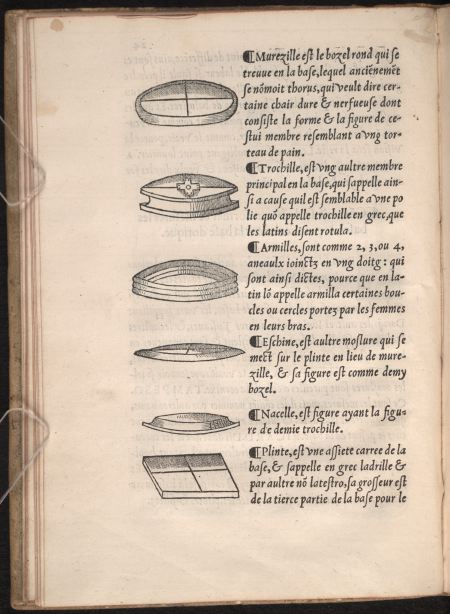
It was published without a date, in 1536 by all accounts, by Simon de Colines, in an in-4° format with reengraved woodcuts traditionally attributed to Mercure Jollat or Oronce Fine. It is not free of errors but has the great merit of giving birth to the French architectural lexicon and has the characteristic of adding to the original text a new development of the “orders” (Figs 2, 3, 4, 5), the proportions of the intercolumnations under an entablature or an arch, the layering of columns and the necessary optical corrections.
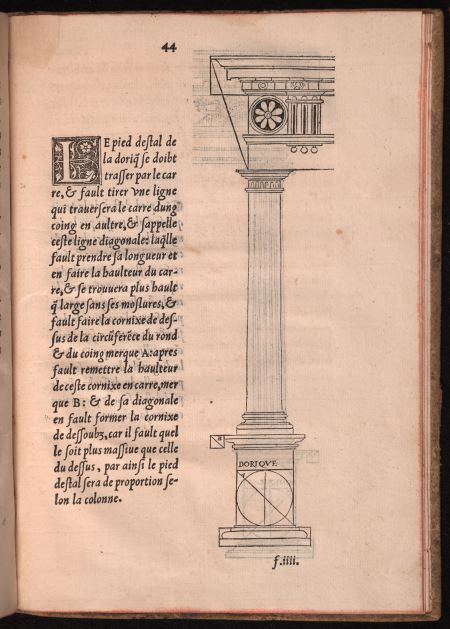
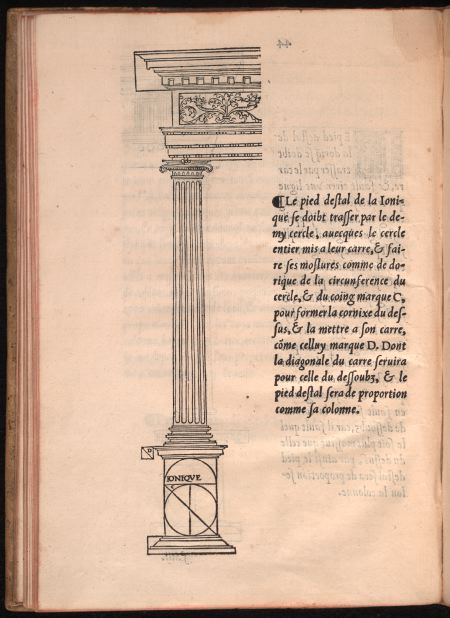
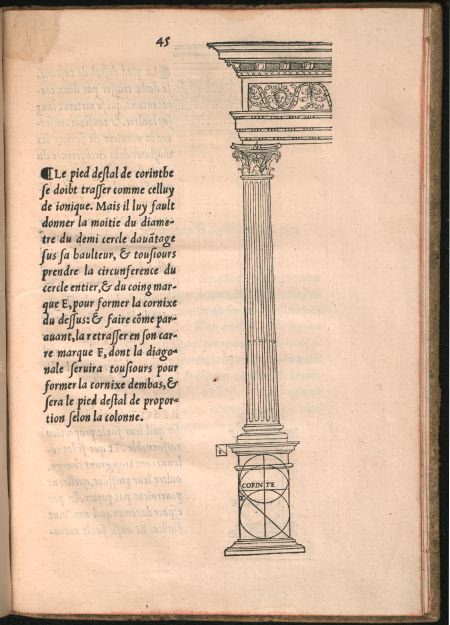
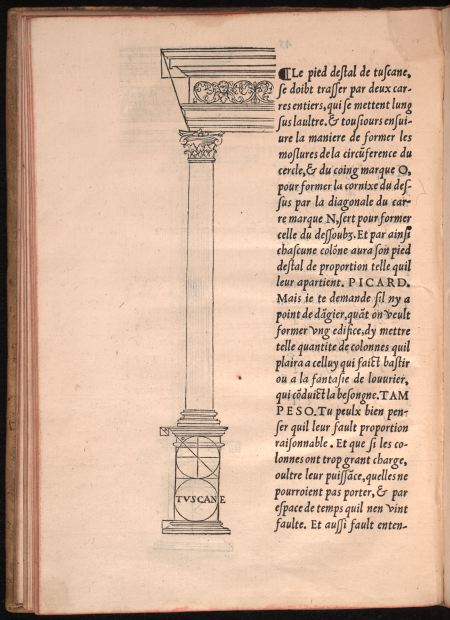
Colines, undoubtedly understanding the challenge posed by an illustrated book on architecture in the vernacular, modernized the French version with supplementary engravings and included an autonomous text of several leaves which made the French Sagredo not just a simple manual of ornaments, but a pre-architectonic treatise ushering in a genre with a great future, the treatise on columns and orders. It was printed shortly before the Regole generali di architetura (or Quarto libro) by Sebastiano Serlio (Venice, 1537) which revolutionized architectural practice in Europe by proposing a coherent vision of architectural ornament with the five “ways” of building.
In fact it was the Quarto libro which instructed Delorme and Bullant, Henri II’s architects. Goujon followed Serlio in the Vitruvius of Martin. In Antwerp Pieter Coecke committed himself to a vast enterprise of translating Serlio’s works and in the Book IV he circulated the models of Serlio in Europe. It is a collection of places, abundantly illustrated, organized around the five orders of architecture, translated into French in 1542. In spite of that, the translation of Sagredo was successful for quite a while because Colines published two new editions of it in 1539 and in 1542, in which the bases were supplemented with enlarged representations of the profiles of their mouldings with indications of their proportions done in a purely graphic system, entirely new (Fig. 6). This de facto removes the necessity of reading a fastidious description.
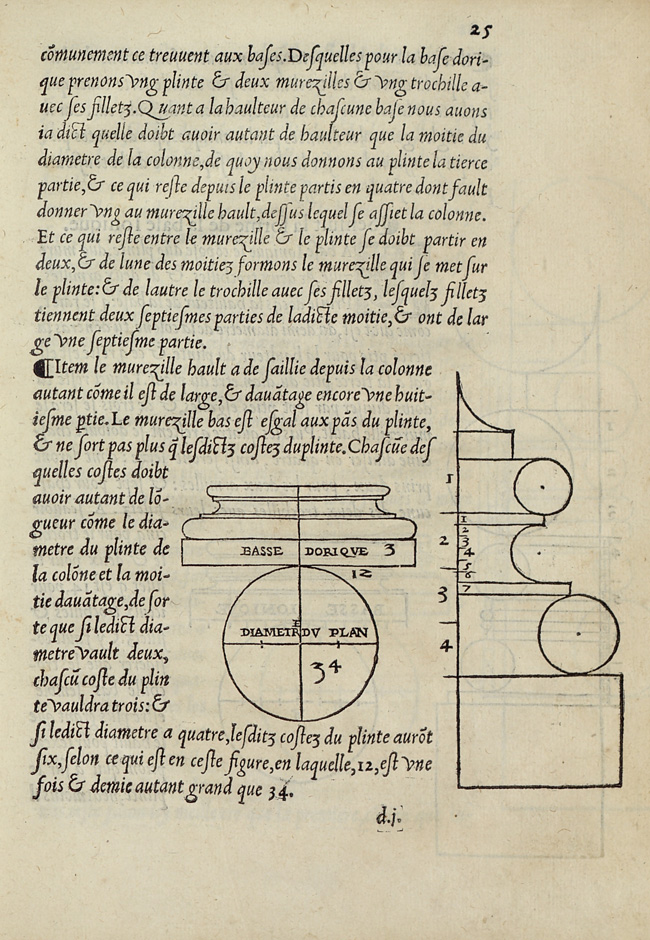
Colines’ editions thus acquired a status different from that of the Spanish edition because all the interventions were valuable aids for practitioners, master-masons, sculptors, joiners and other craftsmen who had not been to Italy but who needed to be acquainted with the new culture. The editorial success revealed that the publisher had met a demand, in the same way that Pieter Coecke did, writing and publishing a short treatise in Dutch himself in 1539 in Antwerp, Die Inventie der colomnen, intended for Flemish craftsmen. The four Vitruvian columns were presented in it like in Sagredo’s treatise which Coecke mentioned incidentally, whereas his luxurious editions of Serlio’s Quarto libro were aimed more at sponsors who were eager for modernity.
The editorial parodox did not end there. If it is rare that a translation meets with more success than the original edition, it is also infrequent that it modifies the editions of the country of origin. The development of the orders and the spaces between the columns, the large number of engravings added in Simon de Colines’ editions gave the French version the status of an enlarged edition and for this reason made it a reference for the Iberian editions which followed (Lisbon, 1541 et 1542; Toledo, 1549 et 1564). Most of the French additions, translated into Castilian, became an apocryphal but substantial part of the later editorial history of the book, of a “Sagredo” which was no longer only Sagredo’s. At the same time the success of the treatise in France and in the Iberian peninsula revealed that Colines and his Portuguese and Spanish colleagues responded to a demand emanating from sculptors and masons and not high level architects. Besides, Sagredo’s treatise was in fashion for a long time in France since it was reedited three times in Paris (1550, 1555 and 1608).
The French version which played an essential role in spreading the Vitruvian architectural lexicon, simultaneously influenced the sculptor Jean Goujon in Saint Maclou in Rouen. Other traces can be found in the “Belle Chapelle” of the Saint Pierre abbey at Solesmes, in the château of Villers-Cotterêts (c. 1536), the château of Dampierre-sur-Boutonne (c. 1545), and at the château of Joinville (1546). In 1624 Louis Savot was still recommending it in his Architecture françoise des bastimens particuliers.
